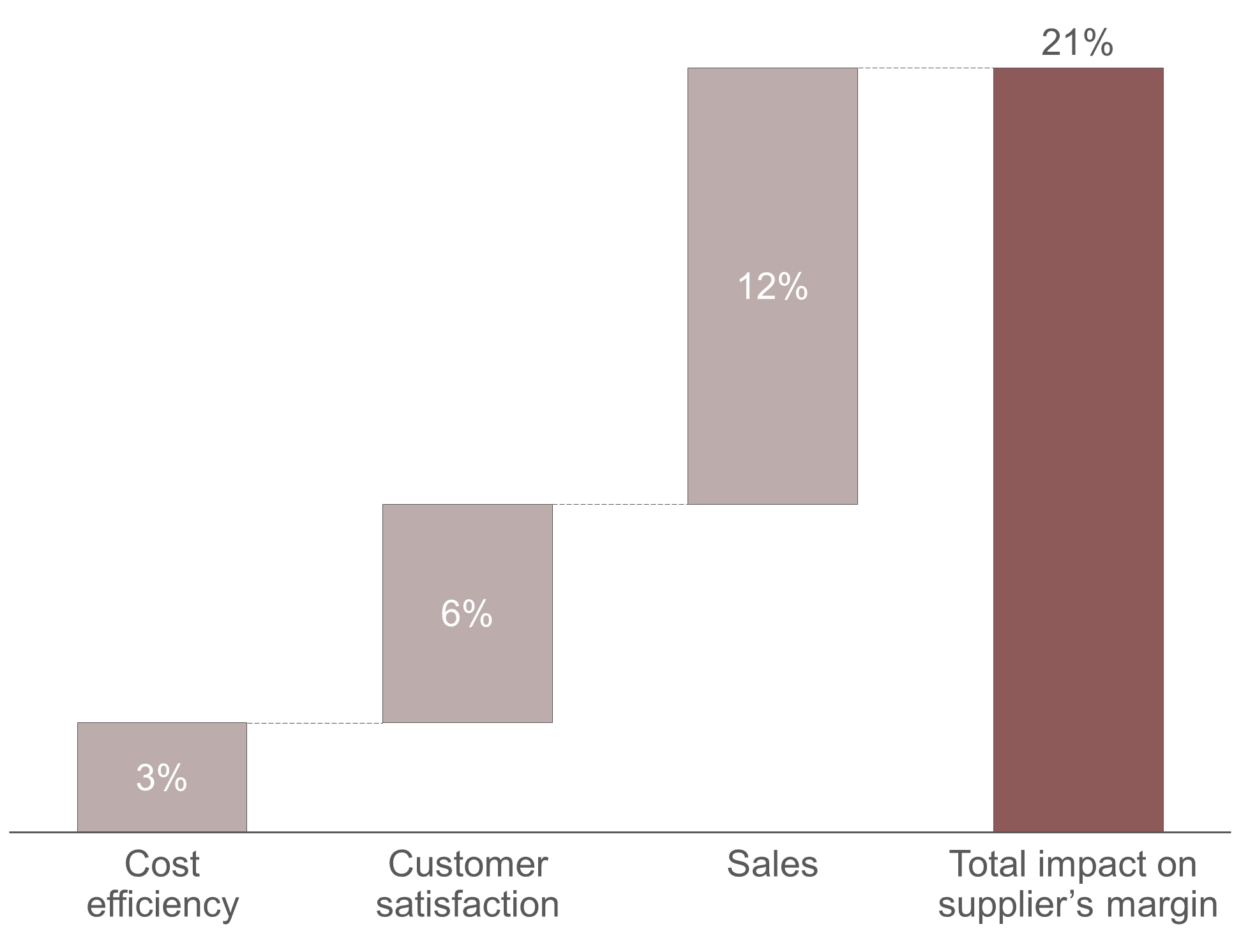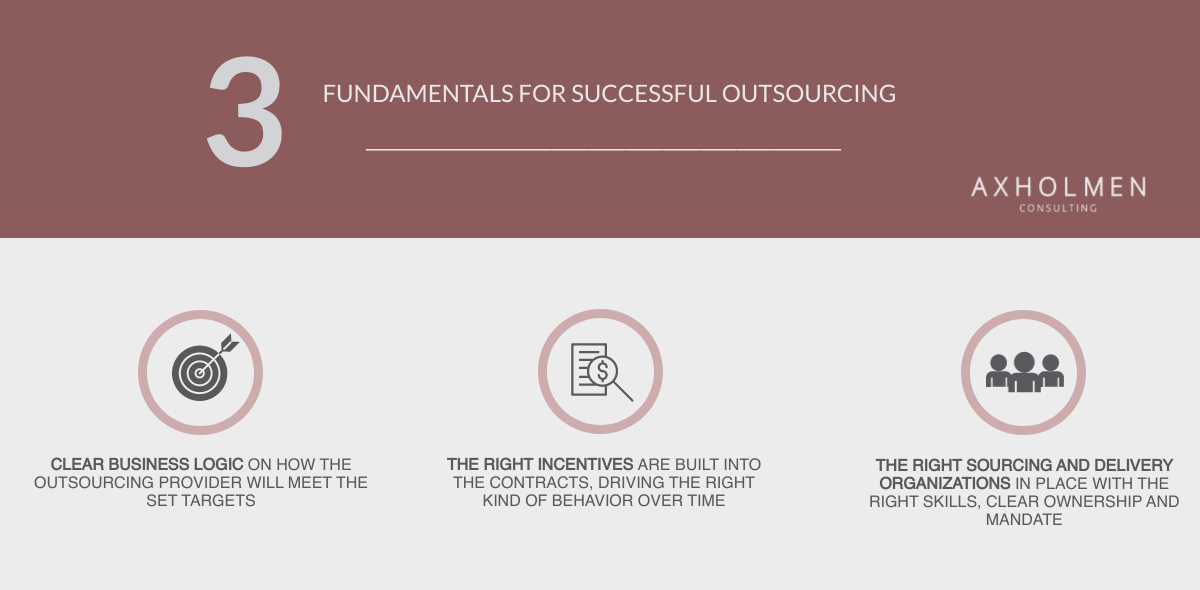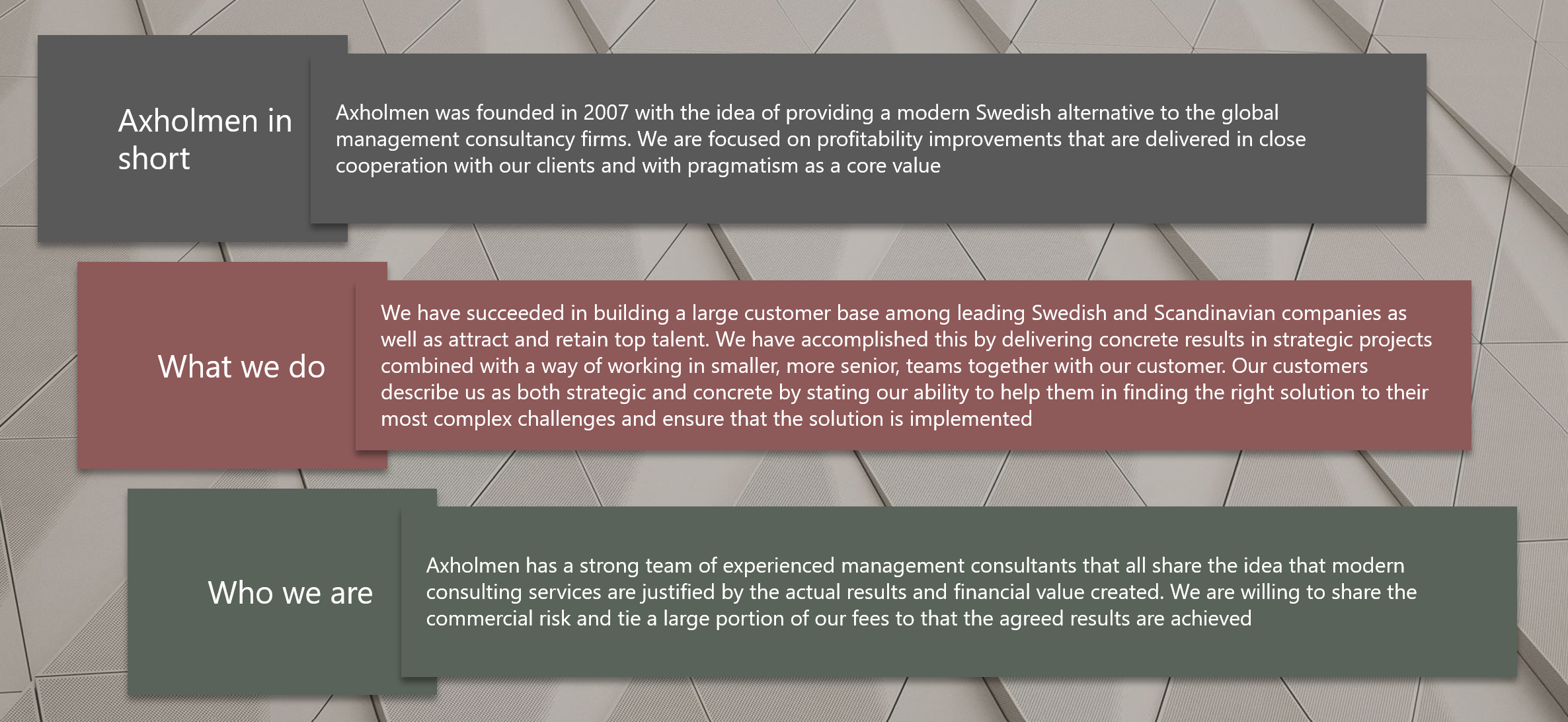In our experience, outsourcing deals that achieve their targets have three things in common, regardless of industry or function:
- Clear business logic on how the outsourcing provider will meet the set targets.
- The right incentives are built into the contracts, driving the right kind of behavior over time.
- The right sourcing and delivery organizations in place with the right skills, clear ownership and mandate, and responsible behavior.
The client has also done their homework regarding the scope of the function to be outsourced, the objectives to be achieved by outsourcing and how these are to be measured.
1. CLEAR BUSINESS LOGIC
Outsourcing providers often promise the moon in terms of costs, skills, quality, capacity, flexibility, etc. It is important to find a proper supplier evaluation method before entering a contract to ensure that the right business logic and conditions for the supplier to succeed are in place. Make sure you get concrete and clear answers as to why and how the supplier will achieve the set targets:
- How does the supplier plan to achieve higher cost efficiency than you have today? Do they have lower staff costs, better resource utilization through higher volumes or more efficient ways of working?
- How will the supplier achieve higher quality, i.e. do they have better delivery processes, better skills or a more effective model for continuous quality improvement?
- How will the supplier achieve greater flexibility? Do they have scale in their service delivery and a broad enough customer base to allow them to accelerate/decelerate when you need it?
Companies that believe that a supplier simply can take over an existing organization and bring positive effects without adding anything themselves rarely succeed in achieving their targets with outsourcing.
2. RIGHT INCENTIVES
Companies, organizations, teams and people are incentive-driven. Outsourcing is often a long-standing relationship and many times expensive to terminate. Outsourcing contracts should always include clear commercial incentives to drive the right kind of behavior over time. Incentives in the form of penalties for SLA deviations are standard in most contracts, but they do not always drive the right type of behavior.

- Make an early management decision to determine the overall objectives of the collaboration over time.
- In our experience, positive incentives usually have an even greater impact, e.g. bonuses when the supplier exceeds targets or the possibility of having penalties repaid if the supplier performs according to the SLA in the coming period.
- Think about the behavior each of the incentives drives. Then balance the incentives to avoid sub-optimization, e.g. low cost at the expense of quality.
- The best effect is achieved when the incentives built into the contract are reflected on the key people and the delivering organization, i.e. their objectives and KPIs are aligned with the outsourcing contract.
- Be careful with incentives where the supplier has to make significant cost savings over time without a clear plan on how to do so. In most cases, poor profitability of the supplier will spill over to the buyer through poor delivery.
3. RIGHT SOURCING ORGANIZATION
No matter how good the contract looks on paper at the time of contract signing, success ultimately depends on the people involved in sourcing, delivery and monitoring, i.e. explicitly their competence, mandate, availability and behavior.
- The competence of the client organization is vital to the success of outsourcing both from the perspective of business competence and the ability to manage the contract. The existing organization rarely has the right skills to design a sourcing
- Business competence is essential to set the right type of requirements and for the ability to proactively develop the business.
- Professional contract management is required to proactively manage and develop the contract and monitor delivery.
- Clear ownership and mandate in client organization is needed. Strive to make the client organization directly responsible for the outsourced operation and align the success of outsourcing with their targets and success.
- The right type of behavior, i.e. the client organization should both be an ambassador for the supplier and provide the best conditions, while the client professionally monitors the delivery and set out requirement.










